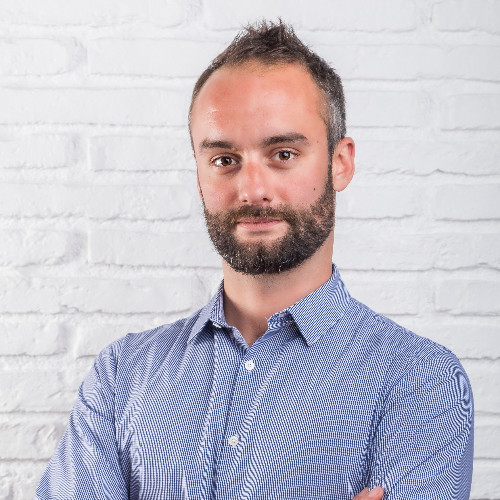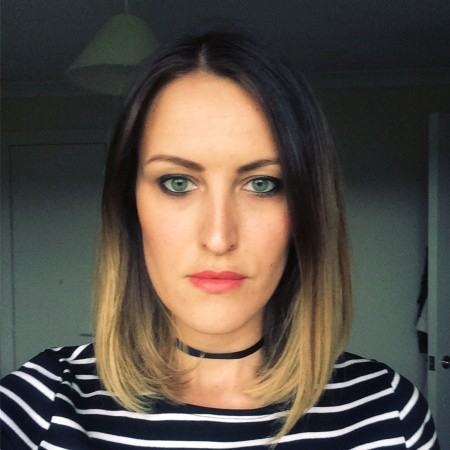It’s the age-old story of performance marketing.
Chasing unicorn status means amping up spend and pouring money into your paid acquisition channels, lining the pockets of the big-you-know-who.
Inevitably, your cost-per-action (CPA) or cost-per-acquisition (CAC) rockets. Do you:
- Pull back on volume to make CPA healthier and slow your growth rate
- Or stick to an uncomfortable CPA to drive bottom-line growth?
Companies like Uber raised over $10 billion of funding in their first six years of existence. Airbnb raised over $6 billion and Deliveroo raised $1.5 billion. Far from promising long-term success, the funding created a rod for their own backs. They’re constantly pushing for the next round of funding to stay on their growth trajectory.
When 40% of VC funding goes to Google, Facebook, and Amazon (Social Capital, 2018), perfecting the balance between your volume and CPA becomes vital.
Enter Emma Aitkens, Head of Performance Marketing at vegan b-corp food delivery service, allplants, Andrea Sericola, Partner and Commercial Director at leading digital agency TRGT, and Andrew French, Programmai’s Chief Revenue Officer.
From both the brand and client-side, the trio share how they set their CPA and volume goals, manage stakeholders and balance growth targets against external unknowns.
Running order
- Building a ‘source of truth’ for your data
- Establishing growth goals and a CPA cap
- Managing expectations and stakeholders
- Controlling the controllable
Below is the transcript, edited for brevity.
Building a ‘single source of truth’ for data
French: When it comes to setting CPA and volume targets, you need a strong dataset. Emma – where does your data live, and do you have a source of truth by channel?
Aitken: When I first arrived [at allplants], we were actually pulling data from Shopify into Google Sheets.
We’ve since introduced Microsoft Power BI. This sits directly on top of a database managed by our engineering and BI team and is designed to give a holistic view into revenue and acquisition.
Our BI team serves the entire business, so we work closely with them to get the right level of detail. It’s a team effort to see a breakdown of acquisition; there’s no source of truth for that. We’ll piece information together to understand channel performance and apply a mix of promo code and last-click attribution along with additional analysis.
On this source of truth, I think we’re moving into a world where there’s no single source of truth anymore. Everything’s nuanced.
Sericola: On this source of truth, I think we’re moving into a world where there’s no single source of truth anymore. Everything’s nuanced, especially as we add more channels and complexities to our campaigns.
We need to be able to adapt and collect insights from multiple platforms, then analyse case-by-case against the client’s ultimate business goal.
When we optimise campaigns at TRGT, we focus on the campaign’s overall value over the CPA. We spend a lot of time with our clients to analyse attribution and LTV, linking the campaign to the lifetime value it generates (typically after 4-6 weeks).
The idea is: we can take into account insights from lifetime value and analyse the impact of different creatives on LTV. With this insight, we can factor this in over a three, seven, or fourteen-day window. And when it comes to goal setting, we’ll talk to customers on a daily basis and enable them to react to challenges as they come in.
It’s a balance – you don’t want to lose control of your CPA. I’ve seen that happen to other brands and it can be just as damaging as the race-to-the-bottom.
Establishing growth goals and a CPA cap
French: Do you think an allowable CPA can actually hinder growth? If you’ve got VC pressure to grow at any cost, how do you grow fast enough at a healthy CPA?
Aitken: allplants’ history in the last few years leads well to this. Initially, we had high growth and acquisition goals alongside declining CPA goals. In January 2020, we were running in both directions.
We talked internally about how to get the balance right, without restricting ourselves or overspending in paid social. Our answer was a CPA cap. It’s a balance – you don’t want to lose control of your CPA. I’ve seen that happen to other brands and it can be just as damaging as the race-to-the-bottom.
Our Retention team is focused on improving lifetime value to give us more room in our CPA. We also have room to flex channel by channel, or campaign by campaign.
We’ll use a CPA-LTV ratio to decide if a channel is worth the investment. If lifetime value increases, we can then increase the CPA cap. If it’s a brand awareness campaign across TV or out of home, we know that we’ll reap the benefits in the quieter months.
French: Where do you start when establishing your CPA & volume goals?
Aitken: Revenue goals come first from our C-Suite, who will then split this across existing and new customers (Retention/Acquisition).
As I look after Acquisition, I’ll set goals against each channel and decide where we need to be more ambitious. There’s no point saying that we’ll make 10X growth without having the building blocks in place for growth. We’ll often go back to the business and have a healthy discussion on whether to prioritise volume or CPA.
It helps to give scenarios. Our budgeting model is far from perfect, but we can give three scenarios to our key stakeholders for them to choose from. For instance, this ‘This is what happens if we spend more. This is what happens if we stick to our CPA goal, and this is what happens if we stick to the growth goal’.
Managing expectations and stakeholders
French: Andrea, from your side, how do you help clients push growth even at an uncomfortable CPA?
Sericola: At TRGT, we work on a rolling contract. This works both ways – it means we have to be aligned with our clients, and by nature, it means they’ll only stick with us if they’re completely happy.
When clients are struggling, we have to be proactive. We’ll set a goal map, turn around ten ideas and test them as much as we can. We work on the shared understanding that we’ll do everything we can in the best interest of the client. Planning and opening conversations are key.
It goes back to aligning with our clients on incentives. Like Emma, we’ll work on scenarios and have an open conversation on what they care about, discuss what’s feasible and discuss that tension between the short and long-term gains.
French: Emma, what does this look like at allplants? Do you have any advice for managing internal stakeholders?
Aitken: We meet with our Chief Marketing Officer and Chief Financial officer on a weekly basis, with a monthly deep-dive into numbers.
If we haven’t hit goals, we’ll outline our plan of attack for the week, share our confidence levels, and get really clear on what’s internal vs. external. What can we control and what can’t we?
Our approach is to also be as honest and proactive as possible. From an operational standpoint, I’d recommend taking the time to understand data before making decisions.
I’ve been in situations in the past where we haven’t done this and change plans every week. More often than not, it doesn’t pay off. It’s so much better to step out for a day or so, replan and move forwards.
Controlling the controllable
French: It’s fair to say that 2021 has thrown us some challenges. Andrea, over the last couple of months, what do you do to adapt in-flight?
Sericola: We’re living in a unique moment. To get an idea of marketplace dynamics, we compared last summer (2020) to the last five years.
Last summer actually looked relatively normal. CPM went down 22% between 2020 and 2019, and the year-on-year increases looked particularly positive between April and May in 2020.
This year, we’ve seen a clear trend in CPM increasing. In June 2021, our CPM was comparable to Black Friday – the usual annual peak.
Against this context, CPM increased substantially by 22%. There’s more demand than supply; Android seems to be following seasonal trends while Apple is changing less proportionally. That’s in line with our expectations of iOS 14+, for sure.
As a buffer, lean on what you can to drive expected lifetime value. Keep testing, keep analysing. When you do this exercise over and over, you get a clear idea on what drives value to your business.
For instance, if you add in a younger demographic to your audience – you might find that your CPA is much lower, but the value it drives to your business will also decrease. It’s all about balance and finding what’s right for your business.
Aitken: We know that summer is generally quiet for us and we’ll always budget for this in the overall plan. But as a growing business, we still want to do more year-on-year.
Once you’re into the quiet months and something else changes, it’s a double whammy. It’s then about controlling the controllable: consolidating audiences and giving the algorithm as much chance to learn without spreading the budget too thinly.
You want to make it clear that you’re doing what you can to mitigate external factors that are outside of your direct control, and share your expectations. If it’s iOS 14 or algorithm changes, focus on the controllable: move focus to creative to keep your click-through afloat, or perhaps move effort into email.
You want to make it clear that you’re doing what you can to mitigate external factors that are outside of your direct control, and share your expectations. If it’s iOS 14 or algorithm changes, focus on the controllable.
When it comes to improving creative, we run monthly creative days (Hack Days). In fact, our team is doing one for TikTok today! Rather than continuously briefing creative, we’ll get together in person or virtually, throw ideas down, and make things there and then.
We know that natural user-generated content far outperforms anything else on Facebook or TikTok: a quick video of filling the freezer with delicious, healthy vegan meals for the week will often do so much better than a high-production ad. It’s the same people creating it, just a larger team bouncing off each other.
Channel diversity is also really important. If one channel starts to suffer, you need something else that will continue to bring in conversions. When I joined allplants, we were heavily reliant on Facebook. We’ve since grown our email list and influencer marketing so we can move budgets around if and when we need to.
Be reactive in the channels, and move budget between them where you can. In the channels where you need to plan further ahead, spend enough time planning so you can be confident in your setup and creative.
Make Predictive lookalikes your edge.
Your first-party data is your advantage. If you want high customer lifetime value to counterbalance an uncomfortable CPA, Programmai is your answer.
Programmai provides a fast, simple and efficient way to create targeting segments (Audiences) to drive high lifetime value.
For bigger, fresher, higher quality audiences, take a look at this blueprint for Facebook lookalike audiences.
We see you, unicorns…




